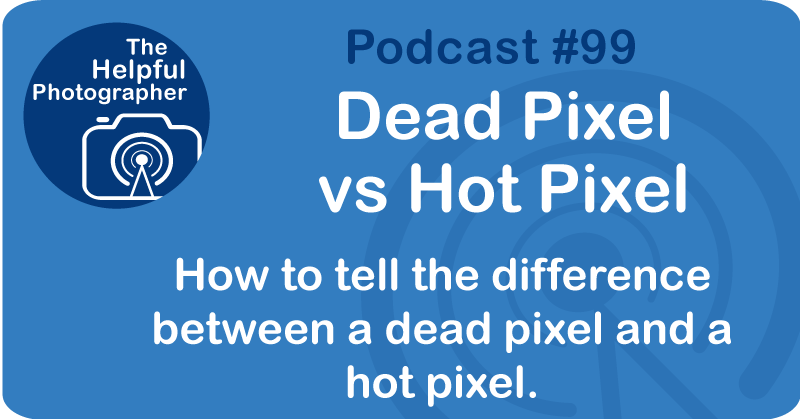Dead Pixel vs Hot Pixel #99
Dead Pixel vs Hot Pixel #99

First of all, what's a dead pixel? A digital camera sensor is made of an array of pixels, and sometimes one of them will malfunction or die, hence a dead pixel, which normally renders itself as a dark spot on your photo. And you can rest assured that it's never going to die in a good spot. It's always going to die in an area that you like to use a lot. Murphy's Law always applies. And I also know that that it's not dust because dust often looks like little worms and if you run your camera sensor cleaning, that dust is going to move around a bit. On the other hand, you may see a bright dot or several dots on your image that is not a result of a dead pixel. And you'll know that it's not a dead pixel because it's not always in the same place. A dead pixel will always be in the same exact place over and over and over again because it's dead.
So what are these little white dots that you see? It's noise created by heat. Last year on a hot summer night while shooting some long exposures, I discovered that there were bright dots on my image and they weren't stars. And I know this because I live in New York City and stars are never that bright. So what's going on? What's going on is that the longer your exposure, the more your sensor heats up. And at a certain point, this hot sensor will produce extraneous dots on your image which often looks like a star. Last year when I talked to Markice Stevenson, the astrophotographer, I discovered that the difference between his astrophotography camera and my camera is a cooler. His camera actually has a cooling system that is built to keep his sensor cool simply for the purpose of preventing and not reducing, but preventing noise from a hot sensor. Since he's photographing stars, he wouldn't want to be introducing any fake stars, right?
Markice also tries to keep his exposures relatively short for the same reason. His exposures are usually less than 20 or 30 seconds. This is why he has to compile hundreds to thousands of shots to get to the photos that he's getting. Last summer, my exposure time was 4 minutes on a night that was over 90 degrees Fahrenheit. And this is why I got fake stars in my photos. It's not a huge problem as they are rather small and can easily be removed in the post process. But sometimes they do land in really bad spots, so that can be a little bit annoying. That's all for today. I hope that was helpful. Until next time, keep on shooting.











